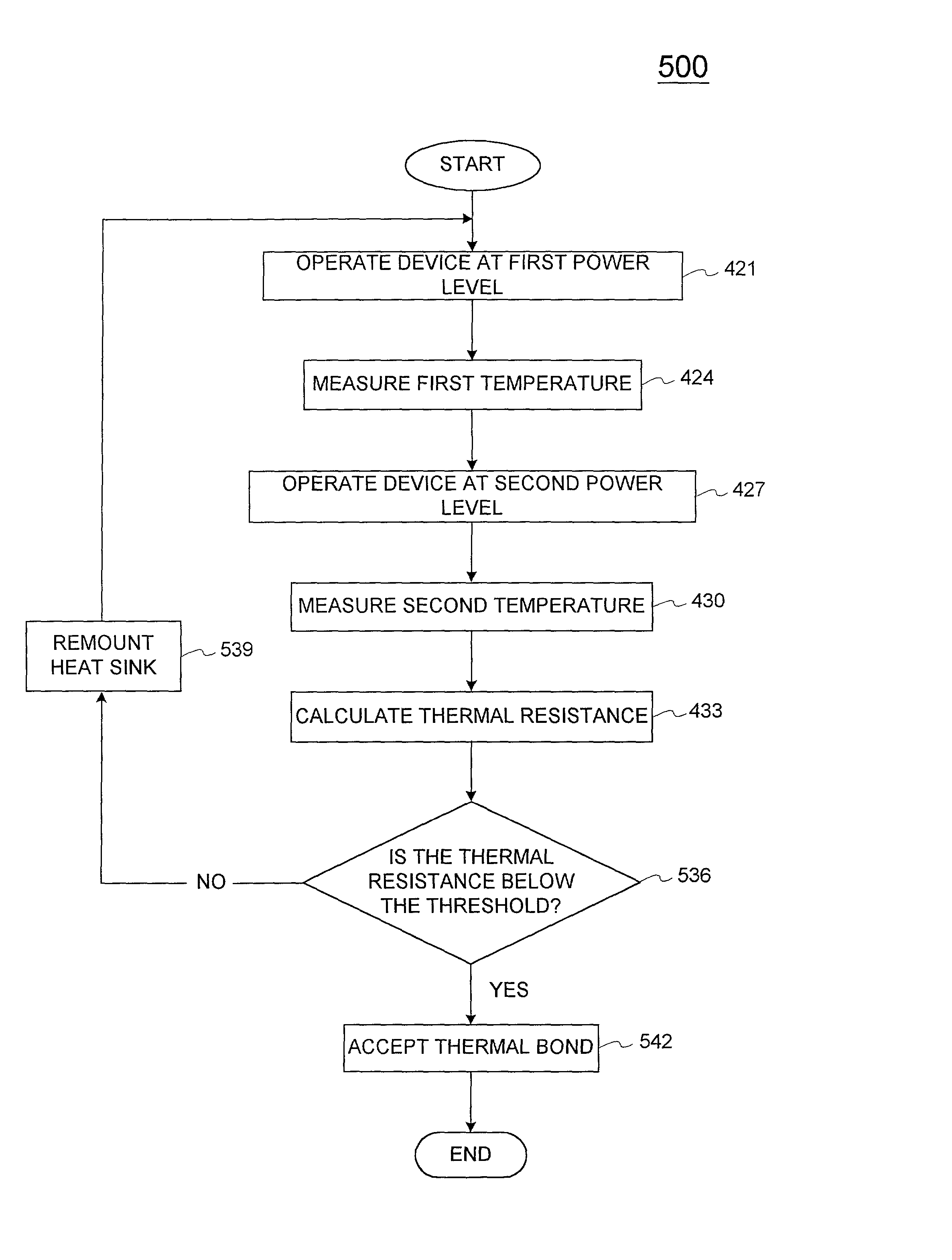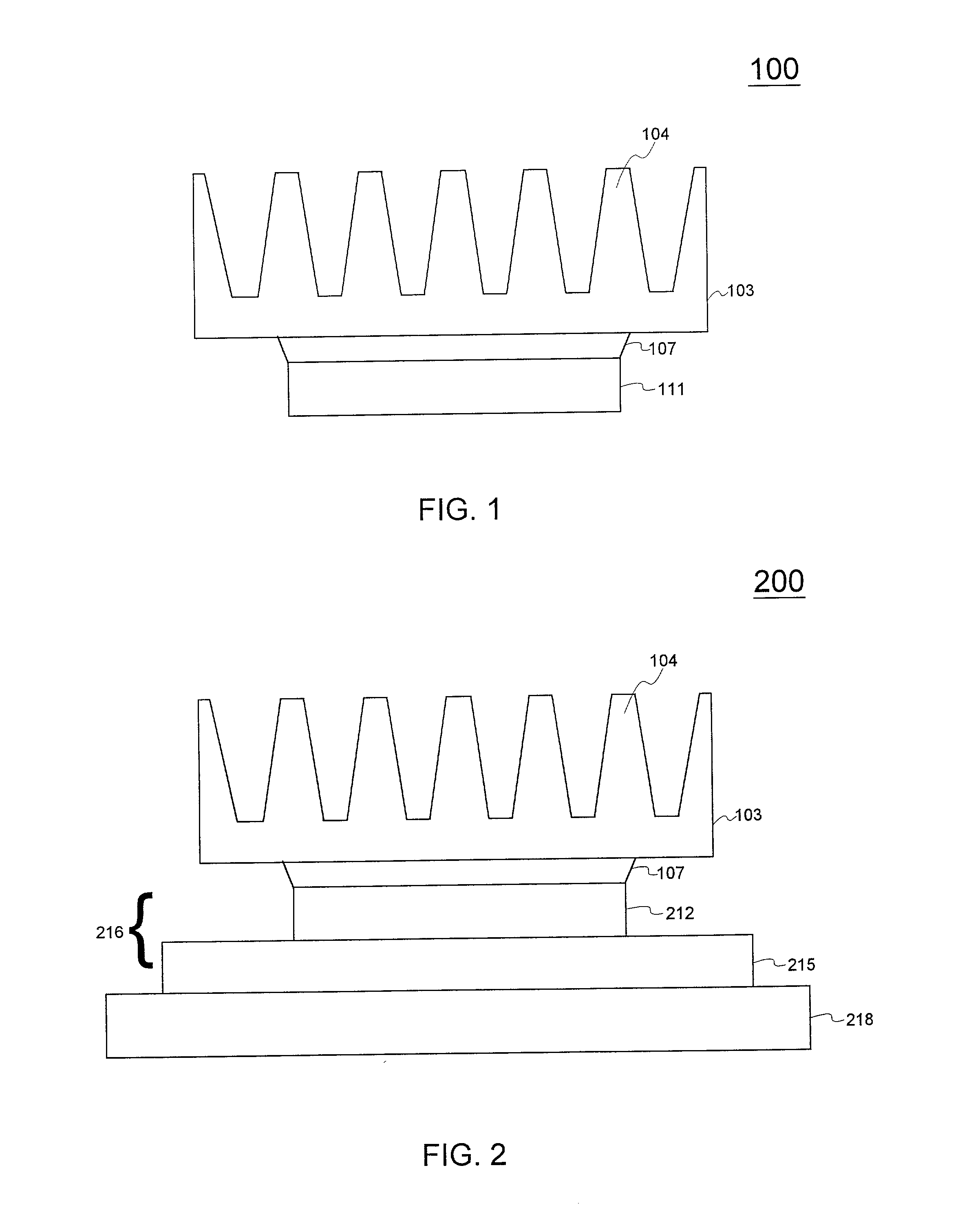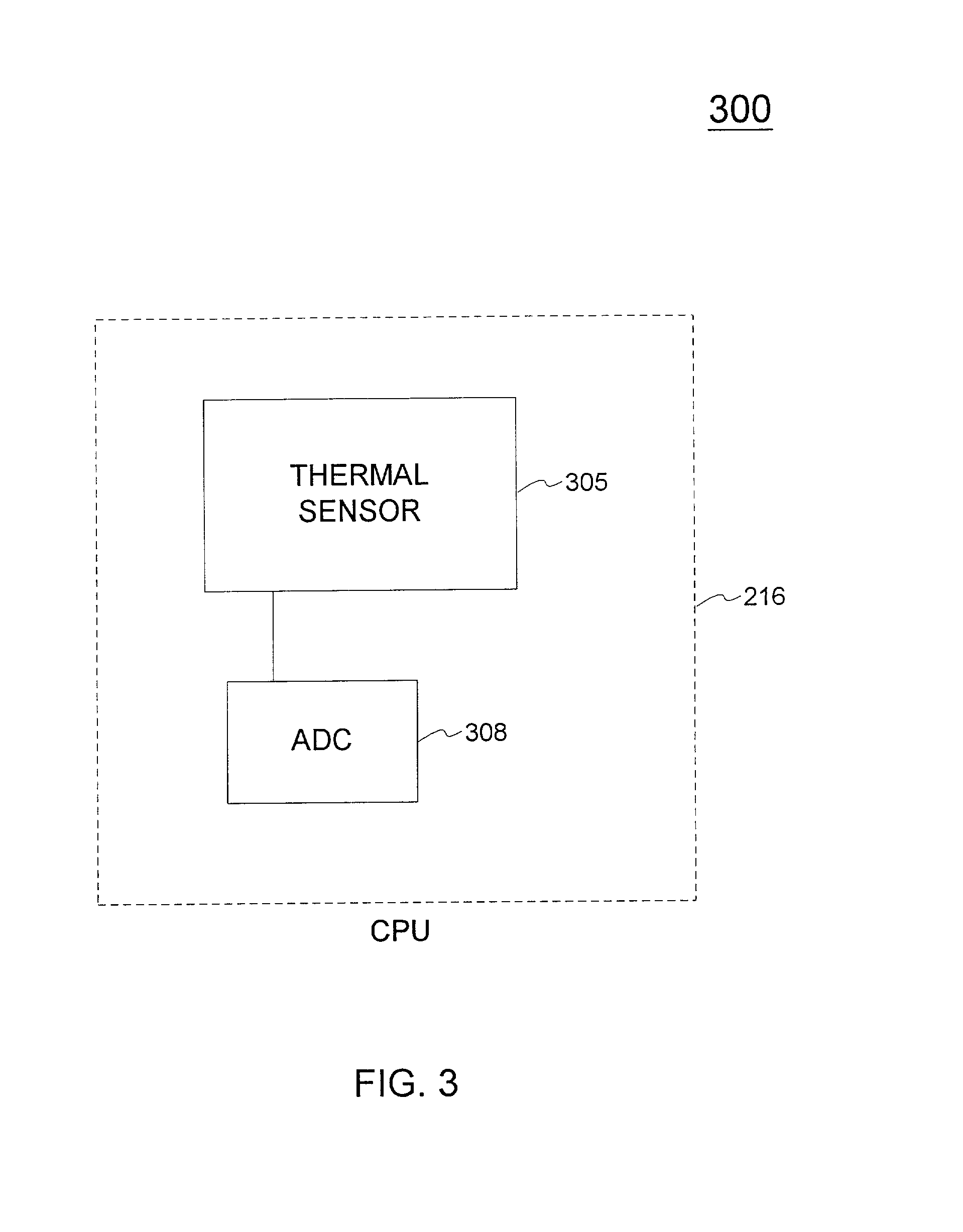Thermal bond verification
a technology of thermal bonds and verification methods, applied in the field of systems and methods for evaluating thermal bonds, can solve the problems of difficult or expensive verification of the good thermal bond of all items manufactured, affecting dramatically the operation of the thermal bond, and difficult to verify
- Summary
- Abstract
- Description
- Claims
- Application Information
AI Technical Summary
Problems solved by technology
Method used
Image
Examples
exemplary embodiment 100
[0027] Referring now to FIGS. 1 through 3, various systems according to the present invention and products made in accordance with methods described herein, will now be described in detail. Accordingly, FIG. 1 is a side view schematically illustrating the bond between a heat-producing device 111 and a heat-absorbing apparatus 103 in exemplary embodiment 100 of the present invention. In the exemplary embodiment illustrated, heat-absorbing apparatus 103 is a heat sink, having fins 104. In the embodiment wherein heat-absorbing apparatus 103 is a heat sink, heat-absorbing apparatus 103 may be a heat sink as described above or as known in the art, and may have a different shape than shown, including being a structural component or enclosure. Heat-absorbing apparatus 103 may be another type heat-absorbing apparatus, including those described above. Heat-producing device 111 may be a mechanical or electrical device as described above, such as a computer chip or CPU. The thermal bond betwee...
exemplary embodiment 200
[0029] FIG. 2 is a side view schematically illustrating the bond between a heat-absorbing apparatus 103 and a CPU 216 mounted on a circuit board such as a printed circuit board (PCB) 218 in exemplary embodiment 200 of the present invention. As described above with reference to FIG. 1, the heat-absorbing apparatus 103 illustrated is shown as a heat sink with fins 104, but may be another type heat sink including those described above or known in the art, or may be another type heat-absorbing apparatus. CPU 216 may be a flip-chip CPU as shown, and may be a flip-chip pin grid array (FC-PGA) or a ball grid array (BGA). Thermal solutions may be attached directly to the back of the processor core package without the use of a thermal paste or heat spreader. CPU 216 may be comprised of CPU silicon die 212 and die carrier 215 as shown, which may be attached in ways known in the art. Silicon die 212 may be flipped (top down) on a substrate containing the solder balls or pins, and directly sold...
exemplary embodiment 300
[0030] A thermal sensor is typically located integral with, in contact with, or near, heat-producing device 111 or CPU 216. Accordingly, FIG. 3 is a block diagram illustrating a thermal sensor 305 on a CPU 216 in exemplary embodiment 300 of one aspect of the present invention. Although in the example shown, CPU 216 is a CPU, it may be another heat-producing device, e.g. heat-producing device 111 in FIG. 1. Thermal sensor 305 may be a thermal diode, a thermocouple, a thermistor, a resistance temperature detector (RTD), and infrared temperature measuring device, a thermometer, or any other device or system suitable for measuring temperature. CPU 216 may also have an analog to digital converter (ADC) 308 connected to thermal sensor 305 that may be read by CPU 216 and used to provide temperature readings, e.g. with a resolution of 1.degree. C. and accuracy of + / -2.degree. C. Although thermal sensor 305 and ADC 308 are shown being on-board or integral with CPU 216, either or both may be ...
PUM
| Property | Measurement | Unit |
|---|---|---|
| time | aaaaa | aaaaa |
| time | aaaaa | aaaaa |
| thickness | aaaaa | aaaaa |
Abstract
Description
Claims
Application Information
 Login to View More
Login to View More - R&D
- Intellectual Property
- Life Sciences
- Materials
- Tech Scout
- Unparalleled Data Quality
- Higher Quality Content
- 60% Fewer Hallucinations
Browse by: Latest US Patents, China's latest patents, Technical Efficacy Thesaurus, Application Domain, Technology Topic, Popular Technical Reports.
© 2025 PatSnap. All rights reserved.Legal|Privacy policy|Modern Slavery Act Transparency Statement|Sitemap|About US| Contact US: help@patsnap.com



